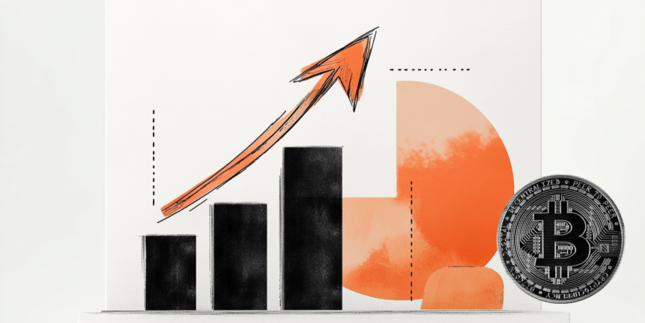NZD/USD Elliott Wave Technical Analysis
Function: Trend.
Mode: Impulsive.
Structure: Orange wave 1.
Position: Navy Blue Wave 1.
Direction next lower degrees: Orange wave 2.
Details: Orange wave 1 of navy blue wave 1 is forming, indicating a new trend.
Wave cancel invalid level: 0.54866.
The NZDUSD daily chart shows the early stages of a new trend using an impulsive Elliott Wave structure. The pair is currently forming orange wave 1 within a larger navy blue wave 1, suggesting the beginning of a potential sustained move on both the current and higher timeframes.
Orange wave 1 marks the first part of this emerging trend and typically reflects early momentum building as the market shifts direction. While wave 1 often has less forceful movement than later waves, its identification is key for confirming the start of a trend. The current formation supports the idea that the pair is initiating a five-wave sequence.
Next, orange wave 2 is expected after wave 1 finishes. This correction phase may offer a pullback opportunity before a stronger wave 3 develops. On the daily chart, this setup may signal the base of a larger trend movement.
The key invalidation level is 0.54866. If price drops below this point, it would challenge the current wave count, requiring a reassessment. This level acts as support and protects the starting point of the wave.
Market participants should watch for wave 1 behavior, including steady upward movement and building momentum. The outlook points to monitoring for trend confirmation and possible pullbacks, which could offer better entry levels. Using technical indicators and price action analysis will help validate the wave structure as it evolves.
NZD/USD Elliott Wave technical analysis
Function: Trend.
Mode: Impulsive.
Structure: Orange wave 1.
Position: Navy Blue Wave 1.
Direction next lower degrees: Orange wave 2.
Details: Orange wave 1 of navy blue wave 1 is forming, marking a new trend.
Wave cancel invalid level: 0.54866.
The NZDUSD 4-hour chart indicates a new trend developing within an impulsive Elliott Wave structure. Price has entered orange wave 1 inside a broader navy blue wave 1, pointing to the start of a fresh upward move. This structure suggests the initial wave of a five-wave impulse pattern is taking shape across both short and higher timeframes.
Orange wave 1 reflects the beginning of this trend, commonly seen with rising momentum as the market defines its new direction. While wave 1 usually shows slower price movement compared to later waves, its formation confirms the potential for a continuing trend. The current pattern implies a gradual build-up before the market reaches its first major correction.
Following wave 1, the market is expected to move into orange wave 2, a corrective phase likely to offer a pullback before the stronger orange wave 3 begins. The 4-hour chart gives key insights into this early structure, signaling that the current activity may be laying the groundwork for a longer-lasting trend.
The important invalidation level is 0.54866. A drop below this level would challenge the wave count and prompt a reassessment. This level serves as crucial support, protecting the wave's origin point.
Traders should observe wave 1’s typical traits: steady upward price moves and increasing momentum. The analysis encourages readiness for trend-following opportunities, noting that wave 1 might progress more moderately than later impulse waves. Using technical indicators and watching price behavior are key for confirming the structure and spotting the shift into wave 2.
Technical analyst: Malik Awais.
NZDUSD Elliott Wave technical analysis [Video]
As with any investment opportunity there is a risk of making losses on investments that Trading Lounge expresses opinions on.
Historical results are no guarantee of future returns. Some investments are inherently riskier than others. At worst, you could lose your entire investment. TradingLounge™ uses a range of technical analysis tools, software and basic fundamental analysis as well as economic forecasts aimed at minimizing the potential for loss.
The advice we provide through our TradingLounge™ websites and our TradingLounge™ Membership has been prepared without considering your objectives, financial situation or needs. Reliance on such advice, information or data is at your own risk. The decision to trade and the method of trading is for you alone to decide. This information is of a general nature only, so you should, before acting upon any of the information or advice provided by us, consider the appropriateness of the advice considering your own objectives, financial situation or needs. Therefore, you should consult your financial advisor or accountant to determine whether trading in securities and derivatives products is appropriate for you considering your financial circumstances.
Recommended Content
Editors’ Picks

Gold nears $3,400; fresh record highs and counting amid USD sell-off
Gold price closes in on $3,400 as the record rally regains strength on Easter Monday. Concerns over US-China trade war escalation and the Fed’s independence smash the US Dollar to three-year troughs. RSI stays overbought on the daily chart, with thin volumes likely to exaggerate moves in Gold price.

EUR/USD trades with sizeable gains above 1.1500, at over three-year highs
EUR/USD trades over 1% higher so far this Monday as the relentless selling interest in the US Dollar keeps it well above the 1.1500 threshold - the highest level since November 2021. Growing concerns over a US economic recession and the Federal Reserve’s autonomy continue to exert downward pressure on the USD.

GBP/USD stays strongly bid near 1.3400 on intense US Dollar weakness
GBP/USD continues its winning streak that began on April 8, trading close to 1.3400 in early Europe on Monday. The extended US Dollar weakness, amid US-Sino trade war-led recession fears and heightened threat to the Fed's independence, continue to underpin the pair. Thin trading is set to extend.

How to make sense of crypto recovery – Is it a buy or fakeout
Bitcoin (BTC), Ethereum (ETH) and XRP, the top three cryptocurrencies by market capitalization, extend their last week’s recovery on Monday, even as trader sentiment is hurt by the US President Donald Trump’s tariff policy and announcements.

Future-proofing portfolios: A playbook for tariff and recession risks
It does seem like we will be talking tariffs for a while. And if tariffs stay — in some shape or form — even after negotiations, we’ll likely be talking about recession too. Higher input costs, persistent inflation, and tighter monetary policy are already weighing on global growth.

The Best brokers to trade EUR/USD
SPONSORED Discover the top brokers for trading EUR/USD in 2025. Our list features brokers with competitive spreads, fast execution, and powerful platforms. Whether you're a beginner or an expert, find the right partner to navigate the dynamic Forex market.